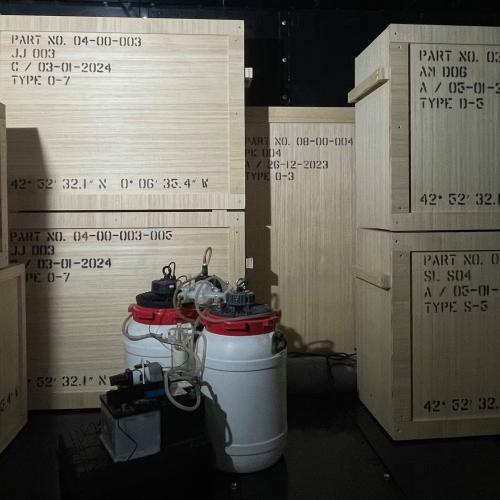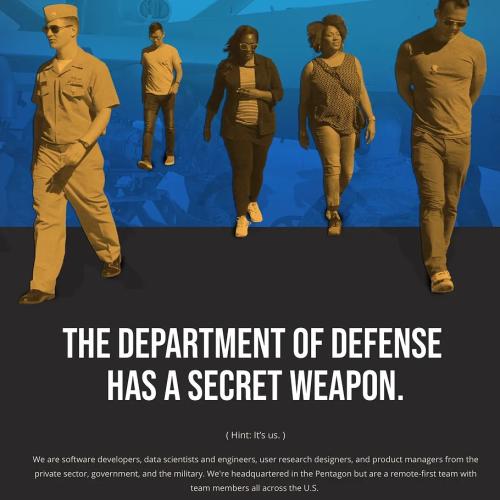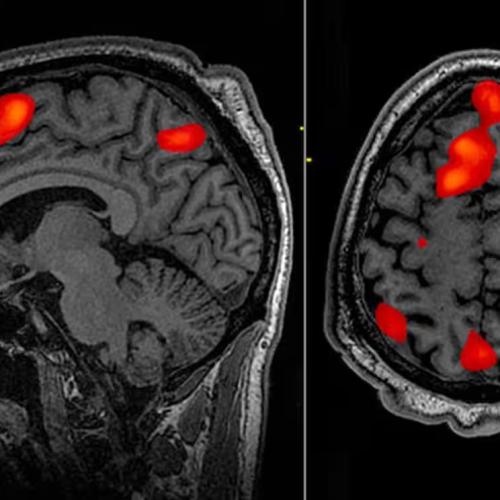Cold Fusion
Using Crystals Verified
In Christian Science Monitor
"A very reputable,
very careful group of scientists at the University of Los Angeles has initiated
a fusion reaction using a laboratory device that's not much bigger than a
breadbox, and works at roughly room temperature. Instead of using high temperatures
and incredible densities to ram protons together, the scientists at UCLA cleverly
used the structure of an unusual crystal. This experiment has been repeated
successfully and other scientists have reviewed the results: it looks like
the real thing this time."
--
Christian Science Monitor, 6/6/05
Though the mainstream media and scientific establishment pretty well slaughtered cold fusion when it first came out in 1989, literally hundreds of scientists have continued passionately researching this topic, even in the face of intense ridicule from their peers. Some of these scientists have even been quite well known. Referring to the first claims of cold fusion success, a November 16, 2004 Washington Post article states, "Since 1989, hundreds of scientists working in dozens of labs around the world have claimed similar results."
Though important news like the below article in the Christian Science Monitor continues to seep out, the new energy cover-up continues strong. The media and general public don't question the fact that gas mileage has not improved in over 60 years, while almost every other branch of technology and engineering has had dramatic increases. The major gas and oil companies clearly benefit by keeping the many new energy inventions which have surfaced, including cold fusion, from becoming public knowledge. For more excellent information on this topic, see our New Energy Information Center. By spreading this important information, we can and will build a brighter future for us all.
With best
wishes,
Fred Burks for WantToKnow.info
http://www.christiansciencemonitor.com/2005/0606/p25s01-stss.html
Sci/Tech
> Science & Space
June 06, 2005
Coming in out of the cold: Cold fusion, for real
By Michelle Thaller | csmonitor.com
PASADENA, CALIF. – For the last few years, mentioning cold fusion around
scientists (myself included) has been a little like mentioning Bigfoot or
UFO sightings.
After the 1989 announcement of fusion in a bottle, so to speak, and the subsequent
retraction, the whole idea of cold fusion seemed a bit beyond the pale. But
that's all about to change.
A very reputable, very careful group of scientists at the University of Los Angeles (Brian Naranjo, Jim Gimzewski, Seth Putterman) has initiated a fusion reaction using a laboratory device that's not much bigger than a breadbox, and works at roughly room temperature. This time, it looks like the real thing.
Before going into their specific experiment, it's probably a good idea to define exactly what nuclear fusion is, and why we're so interested in understanding the process. This also gives me an excuse to talk about how things work deep inside the nuclei of atoms, a topic near and dear to most astronomers (more on that later).
Simply put, nuclear fusion means ramming protons and neutrons together so hard that they stick, and form a single, larger nucleus. When this happens with small nuclei (like hydrogen, which has only one proton or helium, which has two), you get a lot of energy out of the reaction. This specific reaction, fusing two hydrogen nuclei together to get helium, famously powers our sun (good), as well as hydrogen bombs (bad).
Fusion is a tremendous source of energy; the reason we're not using it to meet our everyday energy needs is that it's very hard to get a fusion reaction going. The reason is simple: protons don't want to get close to other protons.
Do you remember learning about electricity in high school? I sure do - I dreaded it whenever that topic came around. I had a series of well-meaning science teachers that thought it would be fun for everyone to hold hands and feel a mild electric shock pass their arms. Every time my fists clenched and jerked and I had nothing consciously do with it, my stomach turned.
In addition, I have long, fine hair, and was often made a victim of the Van de Graf generator - the little metal ball with a rubber belt inside it that creates enough static electricity to make your hair stand on end. Yeesh.
Anyway, hopefully you remember the lesson that two objects having different electrical charges (positive and negative) attract one another, while those with the same charge repel. It's a basic law of electricity, and it definitely holds true when two protons try to get close together. Protons have positive charges, and they repel each other. Somehow, in order for fusion to work, you've got to overcome this repulsive electrical force and get the things to stick together.
Here's where an amazing and mysterious force comes in that, although we don't think about it in our day-to-day lives, literally holds our matter together. There are four universal forces of nature, two of which you're probably familiar with: gravity and electromagnetism.
But there are two other forces that really only come in to play inside atomic nuclei: the strong and weak nuclear forces (and yes, the strong force is the stronger of the two, the weak is weaker. Scientists really have a way with names, don't they?) I'm going to focus on the strong force, as that's the one responsible for nuclear fusion.
The strong force is an attractive force between protons and neutrons - it wants to stick them together. If the strong force had its way, the entire universe would be one big super-dense ball of protons and neutrons, one big atomic nucleus, in fact.
Fortunately, the strong force only becomes strong at very small scales: about one millionth billionth of a meter. Yes, that's 0.000000000000001 meters. Any farther away, and the strong force loses its grip. But if you can get protons and neutrons that close together, the strong force becomes stronger than any other force in nature, including electricity.
That's important- all protons have the same charge, so they'd like to fly away from each other. But if you can get them close together, inside the volume of an atomic nucleus, the strong force will bind them together.
The whole trick with fusion is you've got to get protons close enough together for the strong force to overcome their electrical repulsion and merge them together into a nucleus. The sun does this pretty much by brute force. The sun has over 300,000 times the mass of the Earth, which means there's a lot of gravity weighing down on its core.
That pressure gets the sun's internal temperature up to several millions of degrees, which means that particles inside the sun's core are flying around at huge velocities. Everything is moving around so fast that protons sometimes get slammed together before their charges have a chance to repel. The strong force takes hold, and a new atom (helium) is born.
In this process, some of the mass of the protons is converted into energy, powering the sun and producing the light that will eventually reach the Earth as sunlight.
Scientists have gotten fusion to occur in the laboratory before, but for the most part, they've tried to mimic conditions inside the sun by whipping hydrogen gas up to extreme temperatures or slamming atoms together in particle accelerators. Both of those options require huge energies and gigantic equipment, not the sort of stuff easily available to build a generator. Is there any way of getting protons close enough together for fusion to occur that doesn't require the energy output of a large city to make it happen?
The answer, it turns out, is yes.
Instead of using high temperatures and incredible densities to ram protons together, the scientists at UCLA cleverly used the structure of an unusual crystal.
Crystals are fascinating things; the atoms inside are all lined up in a tightly ordered lattice, which creates the beautiful structure we associate with crystals. Sometimes those orderly atoms create neat side-effects, like piezoelectricity, which is the effect of creating an electrical charge in a crystal by compressing it. Stressing the bonds between the atoms of some crystals causes electrons to build up on one side, creating a charge difference over the body of the crystal. Other crystals do this when you heat or cool them; these are called pyroelectric crystals.
The new cold fusion experiment went something like this: scientists inserted a small pyroelectric crystal (lithium tantalite) inside a chamber filled with hydrogen. Warming the crystal by about 100 degrees (from -30 F to 45F) produced a huge electrical field of about 100,000 volts across the small crystal.
The tip of a metal wire was inserted near the crystal, which concentrated the charge to a single, powerful point. Remember, hydrogen nuclei have a positive charge, so they feel the force of an electric field, and this one packed quite a wallop! The huge electric field sent the nuclei careening away, smacking into other hydrogen nuclei on their way out. Instead of using intense heat or pressure to get nuclei close enough together to fuse, this new experiment used a very powerful electric field to slam atoms together.
Unlike some previous claims of room-temperature fusion, this one makes intuitive sense: its just another way to get atoms close enough together for the strong force to take over and do the rest. Once the reaction got going, the scientists observed not only the production of helium nuclei, but other tell-tale signs of fusion such as free neutrons and high energy radiation.
This experiment has been repeated successfully and other scientists have reviewed the results: it looks like the real thing this time.
For the time being, don't expect fusion to become a readily available energy option. The current cold fusion apparatus still takes much more energy to start up than you get back out, and it may never end up breaking even. In the mean time, the crystal-fusion device might be used as a compact source of neutrons and X-rays, something that could turn out to be useful making small scanning machines. But it really may not be long until we have the first nuclear fusion-powered devices in common use.
So cold
fusion is back, perhaps to stay. After many fits and starts, its finally time
for everyday fusion to come in out of the cold.
Finding Balance: WantToKnow.info Inspiration Center
WantToKnow.info believes it is important to balance disturbing cover-up information with inspirational writings which call us to be all that we can be and to work together for positive change. For an abundance of uplifting material, please visit our Inspiration Center.
See our exceptional archive of revealing news articles.
Please support this important work: Donate here
www.momentoflove.org - Every person in the world has a heart
www.personalgrowthcourses.net - Dynamic online courses powerfully expand your horizons
www.WantToKnow.info - Reliable, verifiable information on major cover-ups
www.weboflove.org - Strengthening the Web of Love that interconnects us all
Subscribe to the WantToKnow.info email list (two messages a week)
Cold Fusion Using Crystals











































































